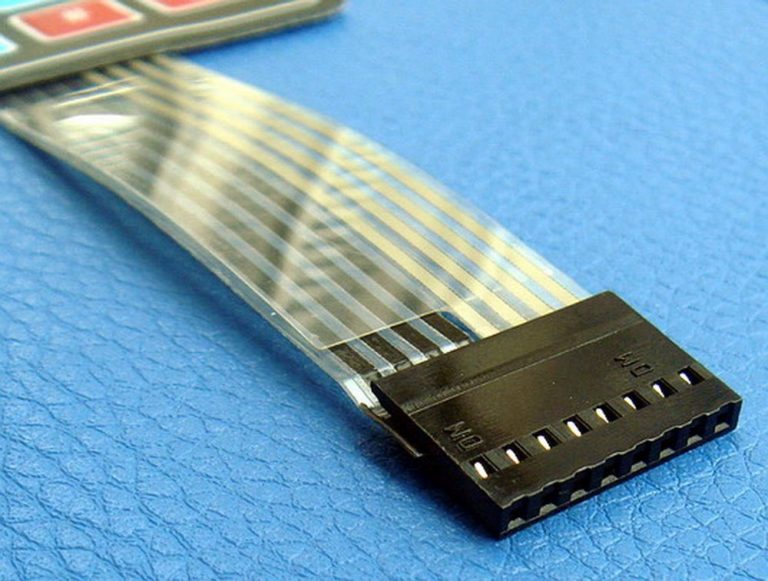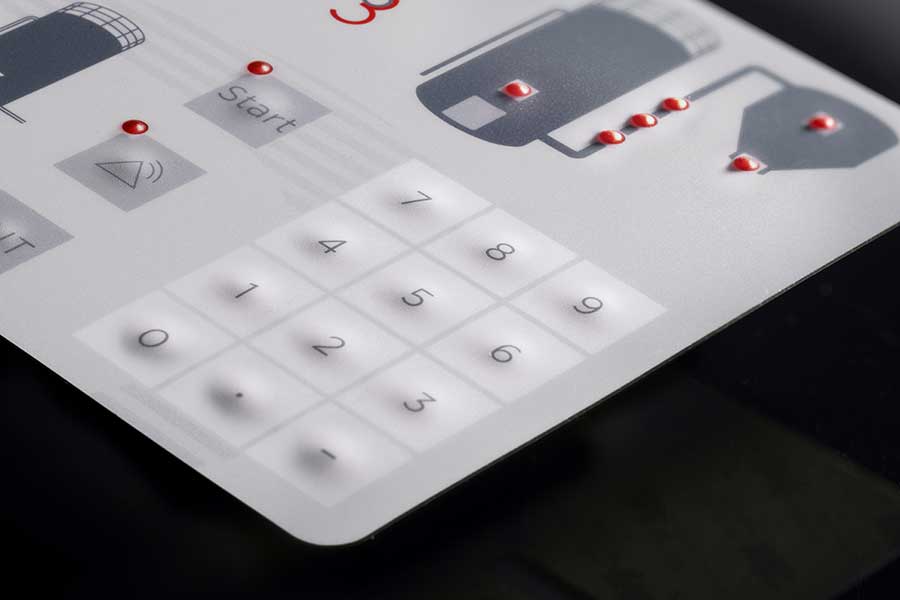All Regarding Membrane Switch: Comprehending Its Layout and Capability
When you consider the control user interfaces in contemporary devices, membrane layer buttons often enter your mind. These elements are greater than simply switches; they mix style and functionality perfectly. Understanding just how they work and what makes them efficient can transform your point of view on daily electronics. But, there are subtleties to their design and efficiency that you could not know. Allow's explore what collections membrane layer switches aside from various other control systems.
What Are Membrane Switches?

Membrane layer switches can also be tailored pertaining to form, size, and graphics, allowing manufacturers to develop unique interfaces customized to details products. In general, membrane layer switches play a significant role in enhancing user experience across a broad range of applications.
Exactly How Membrane Layer Switches Over Job
When you press a trick on a membrane switch, it activates a straightforward yet effective device. The leading layer, often made of flexible material, lowers onto a conductive layer beneath it. This action bridges the space in between conductive traces, finishing an electrical circuit. As quickly as the circuit shuts, it sends out a signal to the gadget's controller, which analyzes your input.
You'll discover that the responsive comments varies based on the switch layout, providing either a soft click or an extra obvious reaction. Once you release the trick, the membrane layer returns to its original setting, reopening the circuit and quiting the signal. This procedure takes place virtually immediately, ensuring a receptive individual experience.
Membrane layer switches are preferred due to their longevity and resistance to dust and moisture, making them perfect for different applications, from family home appliances to medical tools. Comprehending this procedure assists you appreciate their prevalent usage.
Trick Parts of Membrane Layer Buttons
Comprehending the essential elements of membrane buttons is fundamental for understanding their capability and layout. The safety layer guards against environmental aspects and put on, extending the button's life-span. By comprehending these components, you'll gain insight into exactly how membrane switches over operate and their value in different applications.
Products Utilized in Membrane Switch Design
The performance and sturdiness of membrane layer switches greatly rely on the materials used in their design. You normally encounter polyester and polycarbonate as key substratums due to their outstanding toughness and flexibility. These products withstand scratches and chemicals, making them excellent for demanding settings.
The conductive layers often use silver or carbon, picked for their integrity and conductivity. membrane switch manufacturer. Silver offers premium performance, while carbon is a cost-efficient choice. For the overlay, you could think about a matte or shiny finish, relying on your aesthetic needs and customer experience
Make particular to choose adhesives that hold up against ecological elements like temperature level and humidity. Picking the ideal products will certainly ensure your membrane switch stands the examination of time.
Style Factors To Consider for Membrane Buttons
While developing membrane layer buttons, it's important to take into account numerous factors that influence their performance and individual experience. Beginning by focusing on the format and button size; make certain they're user-friendly and easy to navigate.
Validate your design suits ecological variables, like dampness or temperature variants, which could influence efficiency. By thoroughly taking into consideration these components, you'll produce a membrane layer switch that enhances functionality and fulfillment.
Applications of Membrane Layer Buttons
Membrane buttons are versatile elements discovered in various applications, from commercial tools to customer electronic devices. You'll see their impact in makers that need sturdy user interfaces and in gadgets that take advantage of smooth styles. Comprehending these applications assists visit their website you value the capability and practicality of membrane switches in daily technology.
Industrial Tools Usage
When you're wanting to enhance the capability of industrial devices, membrane buttons offer a trustworthy solution that combines durability with user-friendly style. These buttons are ideal for image source severe atmospheres, offering resistance to dust, dampness, and chemicals. You'll find them in control panels for manufacturing devices, cooling and heating systems, and clinical devices, where precision and responsiveness are essential. Their low profile suggests they fit effortlessly into numerous tools, conserving useful room while keeping convenience of use. With customizable graphics and backlighting options, you can produce an intuitive user interface for drivers, enhancing performance and security. And also, their long life expectancy reduces upkeep costs, making them a clever investment for your industrial applications. Accept membrane switches to improve your procedures and improve total efficiency.
Consumer Electronic Devices Integration
In the domain of customer electronic devices, membrane switches play a crucial role in enhancing customer communication and gadget performance. You'll discover them in tools like microwaves, remote controls, and video gaming consoles, offering a seamless means to communicate with innovation. Their sleek style enables very easy assimilation right into different items, making controls intuitive and easy to use. With their capability to include graphics and backlighting, you can delight in a contemporary visual that complements the device's total look. Membrane buttons additionally ensure longevity and resistance to dirt and moisture, expanding the lifespan of your electronics. By choosing membrane buttons, you boost not simply the performance but also the style of your tools, making everyday communications smooth and delightful.
Benefits and Drawbacks of Membrane Layer Buttons
While membrane layer switches offer a variety of advantages, they also come with some disadvantages that you ought to think about. One considerable advantage is their portable design, making them suitable for space-constrained applications. They're also cost-effective, offering a long lasting option with a reduced production cost. Additionally, their seamless surface area is easy to tidy, enhancing health in atmospheres like healthcare facilities.

Membrane layer buttons can have a shorter life-span contrasted to mechanical buttons, particularly under heavy usage. They can also be less responsive, which might impact customer comments during procedure. Stabilizing these pros and cons will certainly assist you establish if membrane layer switches are the best fit for your job.
Regularly Asked Questions
The Length Of Time Do Membrane Switches Over Typically Last?
Membrane layer Clicking Here changes typically last in between 5 to 10 years, depending upon use and ecological conditions. You'll wish to review variables like wear, direct exposure to wetness, and temperature level variations to assess their long life properly.
Can Membrane Layer Switches Be Personalized for Particular Designs?
Yes, you can personalize membrane layer buttons to fit specific designs (membrane switch manufacturer). You'll have the flexibility to choose shades, shapes, and formats that match your job's demands, ensuring they mix seamlessly with your general visual
What Is the Expense Variety for Membrane Switch Over Production?
The cost range for membrane layer button manufacturing generally falls in between $1 and $10 per unit, depending on elements like design intricacy, quantity, and products. You can obtain quotes from producers to discover the best option.

Are Membrane Switches Water Resistant or Immune?
Membrane switches can be made to be water-proof or resistant, depending on products used and building and construction methods. If you require them for damp environments, assure you define those needs during the style procedure.
Exactly How Do Membrane Layer Switches Over Contrast to Traditional Buttons?
Membrane layer buttons are typically thinner and more adaptable than traditional buttons, providing a smooth layout. They're commonly less complicated to clean up and integrate, however might not offer the responsive comments you're made use of to with mechanical alternatives.
Final thought
